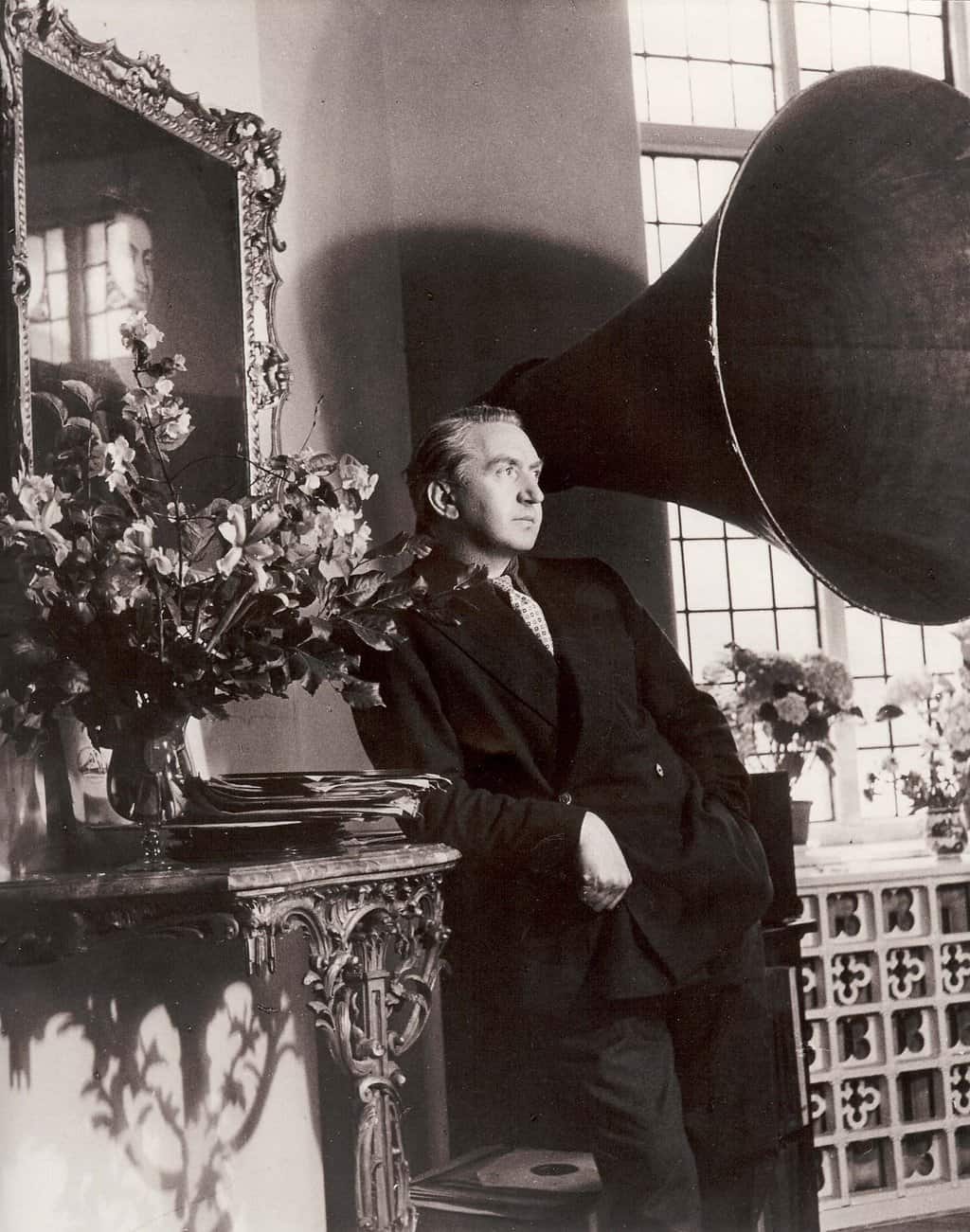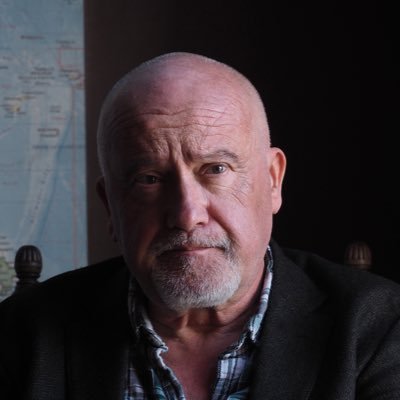Allan Smith is the great-nephew of Brian Desmond Hurst…
I lifted the lid the other week on one of our great art mysteries at a Royal Geographical Society talk at Queens University Belfast on the ‘Life of Brian’. Or more correctly how a working class linen worker from East Belfast called Hans Hurst was orphaned at 16, joined the army in the first week of the First Word War and as a rifleman with The Royal Irish Rifles saw his mates slaughtered at Gallipoli. Wounded and unwell he deserted and was not shot at dawn but rejoined to fight again (a trick of a new name -the Irish regal ‘Brian’ – and knocking a few years of your birth). Luck turned and he became arguably our greatest film director both producing and directing Scrooge and a host of war films. He was unashamedly gay when his film colleagues were being locked up and converted from Ulster covenant signing Protestant to Catholicism under the guidance of his mentor and greatest friend the legendary John Ford. He amassed a Rolls Royce, Bentley, art works including Picasso, Monet and Yates and gave everything away to die at 91 waiting for another bottle of champagne. When my grandparent attended his three story home in Belgravia the house had been emptied apart from a few uncollected letters. More people really should know the name of Brian Desmond Hurst and we’re slowly getting there.
As Northern Ireland’s film industry thrives and continues to attract investment and creativity, I have been working with the Ulster Museum to help curate an exhibition Film as Art: Brian Desmond Hurst, Film Director. Brian was my great, great Uncle and I manage his Estate. The exhibition was inspired by the publication of a book described as ‘a visual treat’ Hurst on Film 1928 to 1970 by my daughter Caitlin Smith and leading writer for TV, radio and stage Stephen Wyatt. It was a dream team as Caitlin brought a creative burst to the 600 pages and 1,000 images and Stephen had sat with Brian Desmond Hurst in the mid 1970s to document Brian’s memoirs. Stephen went on to write for radio, stage and TV (including episodes of Dr Who and Casualty).
The exhibition opened in July and runs until the 10 January at the Ulster Museum and draws inspiration from key ‘film as art’ images in the book to celebrate the life and work of a man who is often hailed as one of Ireland’s best film directors. The exhibition displays film posters, invitations, lobby cards, original press clippings from Hurst’s own scrapbooks, film footage and photographs to showcase Hurst’s remarkable achievements on film.
Born into a shipyard working-class family in east Belfast and survivor of the cruel slaughter of his battalion at Gallipoli, Hurst went on to become a product of Hollywood’s Golden Age of Film. His filmmaking portfolio was extensive and well-respected internationally, with over thirty films in his portfolio ranging in themes from war to comedy, horror to historical fiction. He is perhaps best known for the 1951 Christmas classic still loved throughout the world Scrooge starring Alastair Sim and released in the USA under Dickens’ original title A Christmas Carol.

After the First World War Hurst left Belfast and emigrated to Canada to study art. He later became part of the “bohemian” movement in Paris and New York before finding his way to Hollywood and art direction. He then took his painterly eye into film directing and had the greatest of teachers in the art medium of film- the legendary John Ford.
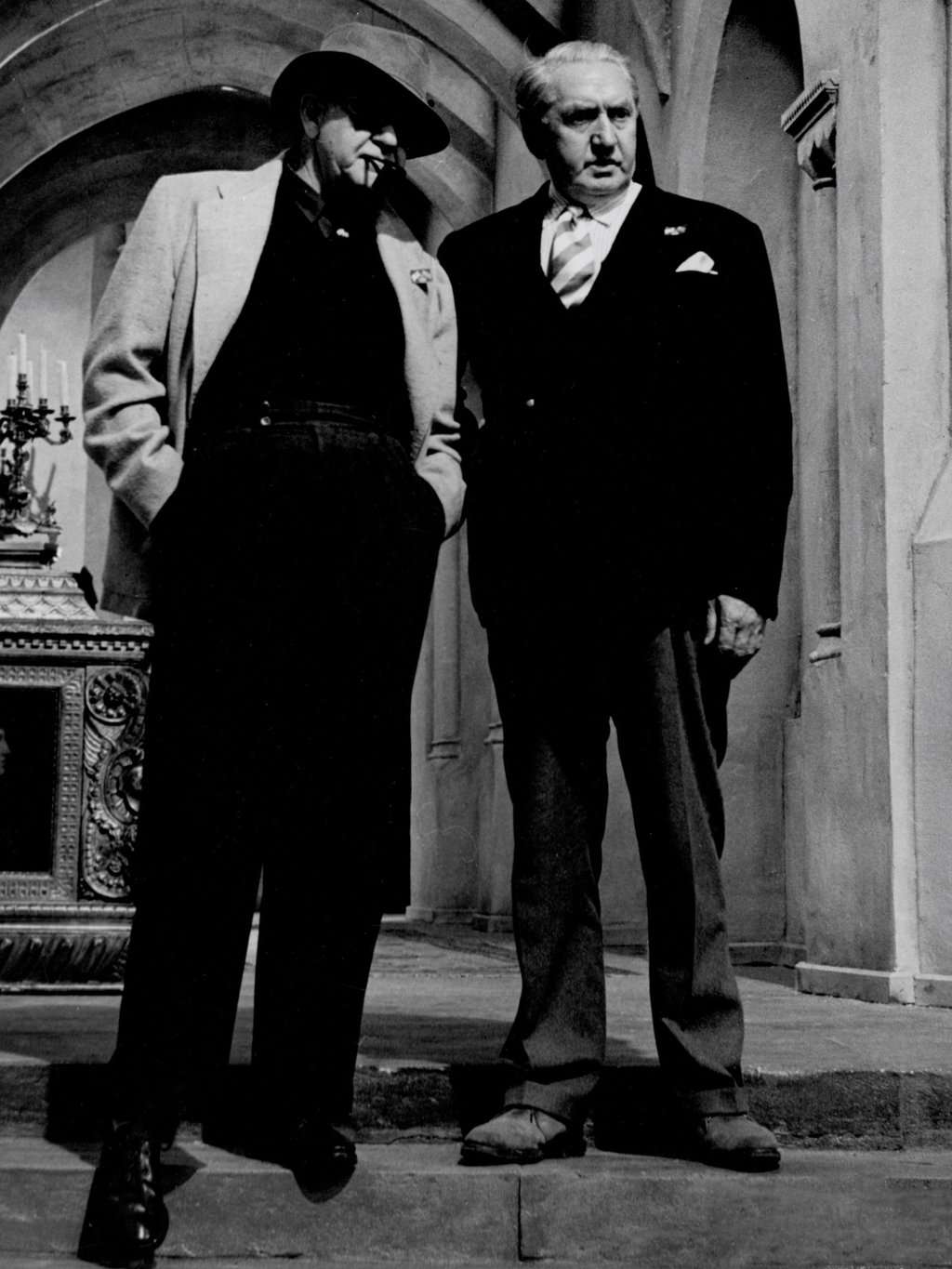
In 1934 on returning to the UK he formed his own production company to propel his art on film. His first film The Tell Tale Heart (adapted from Edgar Allan Poe’s short story) was dark and deemed too horrible to show in some cinemas but achieved artistic critical acclaim with executives from Fox identifying his talent. His break through film was his Irish War of Independence film Ourselves Alone which sold out in London and Dublin but was banned in Belfast – a copy of the banning order is in the exhibition. Controversy can help an artist and Hurst was soon to be put under contract with Alexander Korda, the then leading British film magnate, to write a script for Lawrence of Arabia. Hurst writing in 1936 described film as “The World’s Only New Art Form” and flagged that “the full use of the camera as an art form has net been attained”. The full text is on display in the exhibition and current film directors tell me that Hurst’s perception nearly 90 years ago is still a template for film making.
Hurst was then settling down to direct Lawrence of Arabia when the project was put on ice and instead he made Prison Without Bars for Korda which Life Magazine in New York fanfared as its film of the week- a first for a British Film I’m told. Hurst had broken through internationally.
In putting together an exhibition I wanted to underline Brian’s pathfinding for all of us who follow in Northern Ireland film making. You will see Irish Hearts (1934) possibly Ireland’s first feature length talkie and I desperately need to find a full copy so we can fanfare this. There is a partial copy at the Irish Film Institute in Dublin and I think there may be a full copy out in the USA under it’s USA release title Norah O’Neale. If any one finds it please get in touch with me straightaway- that would make my year. When you see the poster for Warsaw Concerto from his Dangerous Moonlight (1941) the piano concerto that broke the mould for using concerto in films will spring into your mind. And then there is Hurst’s own wartime experience which generated more conflict films and there may be a jaw dropping moment as you look at the detail- no spoilers here but you will know what I mean when you find it. There is the biggest grossing war film for nearly a decade and his Arnhem Airborne tribute Theirs is the Glory (1946). Add in a series of big box office successes including Scrooge (1951), Tom Brown’s Schooldays (1951), Malta Story (1953) and Simba (1955) and the visuals and art in Brian’s film just underline how a picture is worth a 1,000 words and a film is worth 100,000 words.
That brings me to one of my personal highlights A Letter From Ulster which we have remastered and put up on our Brian Desmond Hurst youtube channel so you can see for free.

Mike Catto, film critic and historian, said that everyone in Northern Ireland should see this film. I think I’d add that the millions of grandkids in the USA should- maybe someone should nudge our ambassador Joe Kennedy – he’d love it and could spread some real solid gold history. Our very own Brian Henry Martin tells me it is possibly Northern Ireland’s first full length documentary and is an exempla in documentary making. The 33 minutes will tell you more about life in Ulster in 1942 than any book- it’s the visuals, the camera angles, the script, the story and the occasional use of powerful close ups. Brian in his memoirs explained that in 1942 he was commissioned by the Crown Film Unit (part of the Ministry of Information) to make a film showing that the American GIs training in Northern Ireland were getting along fine with the locals. Nazi spies in Dublin had been putting it around that the GI’s were beating up the local men- “as if anyone could” Brian observed and he brought in his protégé Shaun Terence Young to write the script and future co-founder of UTV William MacQuitty was his assistant.
Terence worked with Hurst for 7 years and later went on to direct Dr No, From Russia With Love and Thunderball. Settle down and take yourself back to 1942 and be the judge- film as it should be watched on the big screen. (Ohh and just to cap the Bond link Brian paid for Roger Moore to go to RADA and gave him some of his earliest roles and I love the Roger piece in the museum exhibition). Look into the eyes of the American GIs filmed in a church service in St Mary’s Church on Chapel Lane in Belfast and remember that Brian had survived warfare at it’s worth at Gallipoli. Those few frames tell you more that 100,000 words. It is art in it’s purest and most beautiful form as it brings a human touch to warfare. Those young GIs we see went on to fight at Anzio in Italy- how many returned? It was the only time Hurst filmed in his home City and this is Hurst at his finest.
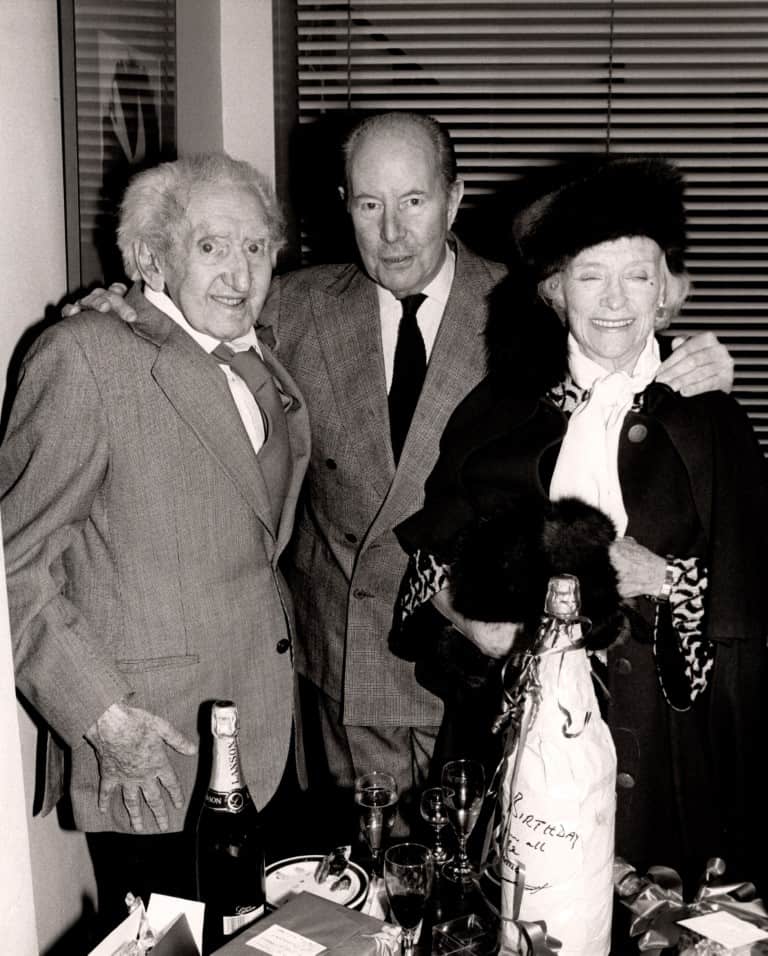
I attended Brian’s 90th birthday party at BAFTA in 1985 and it showed me how much he was respected and that his work should not be forgotten. At the event Brian imparted advice to me on the names for champagne bottle sizes- it was important to him. Brian never married and died in 1986 aged 91 waiting for a friend to deliver another bottle of champagne. He was bisexual and when film magnate Arthur Rank was about to sign up Hurst as a director he enquired “I’ve heard some peculiar things about you lad”. Brian replied “Arthur I am as God me”. You’ll see these words shine large in the exhibition.
Hurst was honoured in 2011 with a cherished Directors Guild of Great Britain blue plaque installed at the QFT and an Ulster History Circle plaque which can be seen at the Strand Arts Centre. We are so lucky to have such great film screening establishments in Belfast and long may they flourish. A year later in 2012 one of the Titanic sound stages was named after Hurst. Appropriately it is the bright multi-coloured one and almost looks like a form of art. It hints at his flamboyant and quite unbelievable life.
For more on the life of Brian Desmond Hurst, you can listen to the RTÉ documentary ‘An Irishman Chained to the Truth‘.
You can also follow his legacy site on Facebook.
The lavish book Hurst on Film 1928-1970 is available on kindle for £1.49 for the duration of the exhibition.
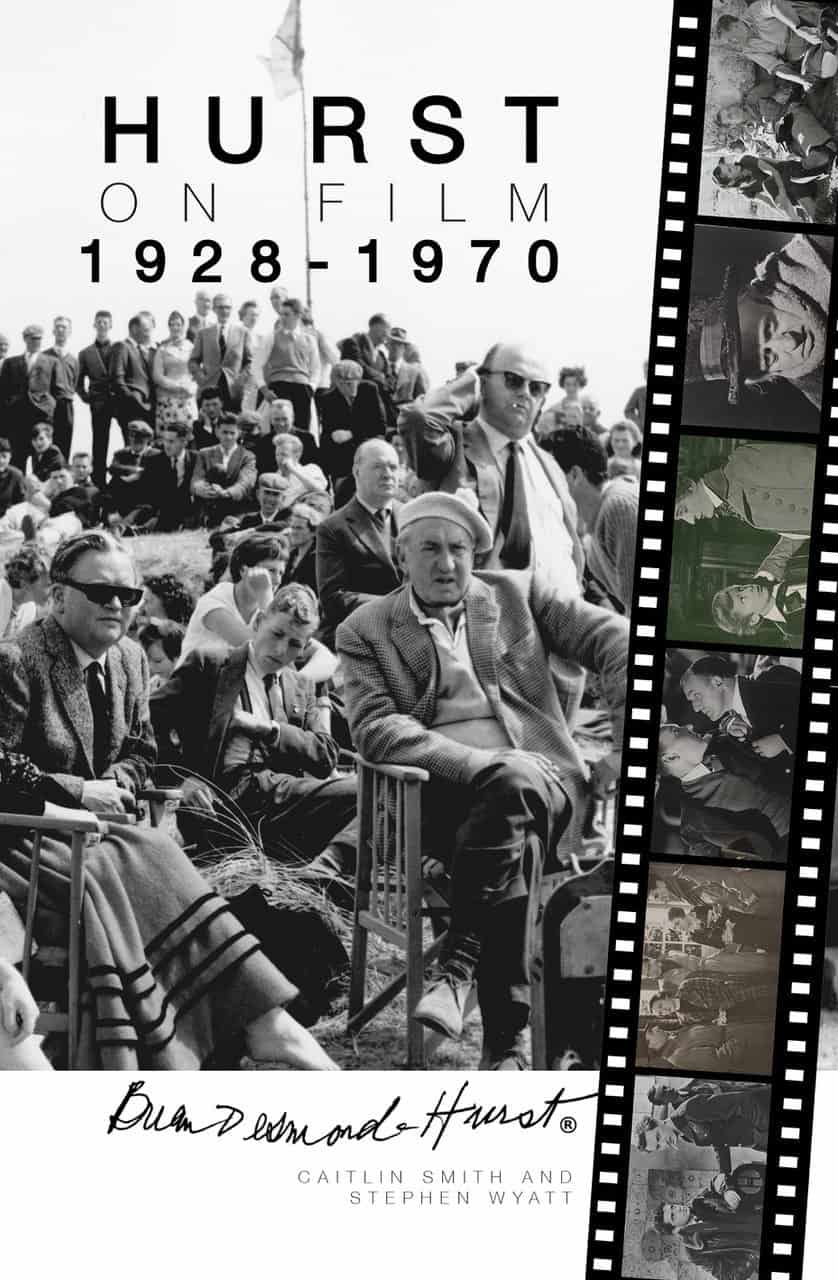
This is a guest slot to give a platform for new writers either as a one off, or a prelude to becoming part of the regular Slugger team.
Discover more from Slugger O'Toole
Subscribe to get the latest posts to your email.
